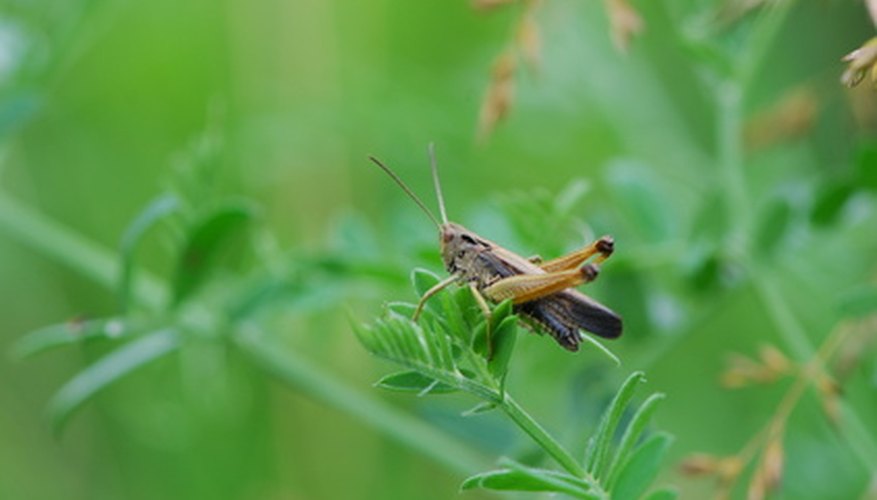Although we might wish that insects were more sedentary, one of the more startling, even entertaining, things they do is jump. Grasshoppers, fleas, praying mantises, katydids, flea beetles, crickets and click beetles are some of the insects that can hop out of harm’s way or to a new host. Some believe that walking sticks can jump, but they fall from their perches when threatened, and use their wings as a parachute to float to safety.
Click Beetles
A click beetle is clever enough to jump without using its legs. Of course, even more clever would be to not end up stranded on its back in the first place, but when a click beetle is upside down, it's too unbalanced to roll over onto its short little legs. Instead it arches its back, bending the middle of its body upward so that just its front and back ends touch the ground. Then it suddenly straightens out, making a loud click sound and spinning itself into the air to land right side up. A click beetle about half an inch long can catapult through the air about a foot.
- A click beetle is clever enough to jump without using its legs.
- Of course, even more clever would be to not end up stranded on its back in the first place, but when a click beetle is upside down, it's too unbalanced to roll over onto its short little legs.
Grasshoppers
Grasshoppers are also named for their most remarkable activity. Only in their case, the move is a pretty classic jump. A grasshopper’s back legs have strong, oversized muscles that send it into those great leaps. Technically, the insect’s muscle-bound femurs can straighten with sufficient force to shove their tibiae against the ground hard enough to propel them upward and forward. The grasshopper prepares for the move like an Olympic contender, swaying slightly back and forth while it gauges the jump and gathers itself. Then—airborne. All predators left behind or a juicy new perch perfectly landed on. Scientists at Cornell Center for Materials Research say that grasshoppers can jump 80 times their length, which would be like you jumping one and a half football fields.
- Grasshoppers are also named for their most remarkable activity.
- A grasshopper’s back legs have strong, oversized muscles that send it into those great leaps.
Fleas
You'll see fleas jump when things get too crowded on Rover or when something unpleasant, such as a run through a sprinkler, upsets their canine snack. Fleas jump in the same manner as grasshoppers. They have modified back legs specially designed for thrusting. If they're scared, threatened or merely want the quickest route to a fresh meal, they leap. Fleas sense vibrations from potential hosts, and that tells them where to jump. They can propel themselves 200 times their tiny body length. If you could do that, you would be able to leap 70-foot-tall buildings in a single bound. If your dog could do that—oh, never mind. Just get him a flea collar.
- You'll see fleas jump when things get too crowded on Rover or when something unpleasant, such as a run through a sprinkler, upsets their canine snack.
- Fleas sense vibrations from potential hosts, and that tells them where to jump.
Bedbugs, Cockroaches and Spiders
Some other insects that can jump are crickets, katydids, froghoppers (or spittlebugs), brownbanded cockroaches, flea beetles, praying mantises, locusts (a kind of grasshopper), springtails, leafhoppers, and bedbugs. Spiders can jump and are accomplished acrobats, sometimes spinning a thread of silk as they sail (the thread acts as a lifeline they can scramble back up in a pinch), but even though about 5,000 species of salticidae spiders can and do jump on their prey, they are arachnids, not insects.
